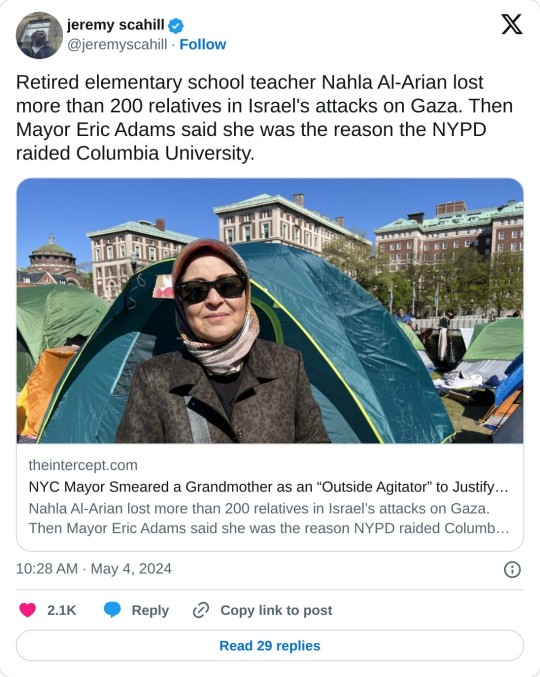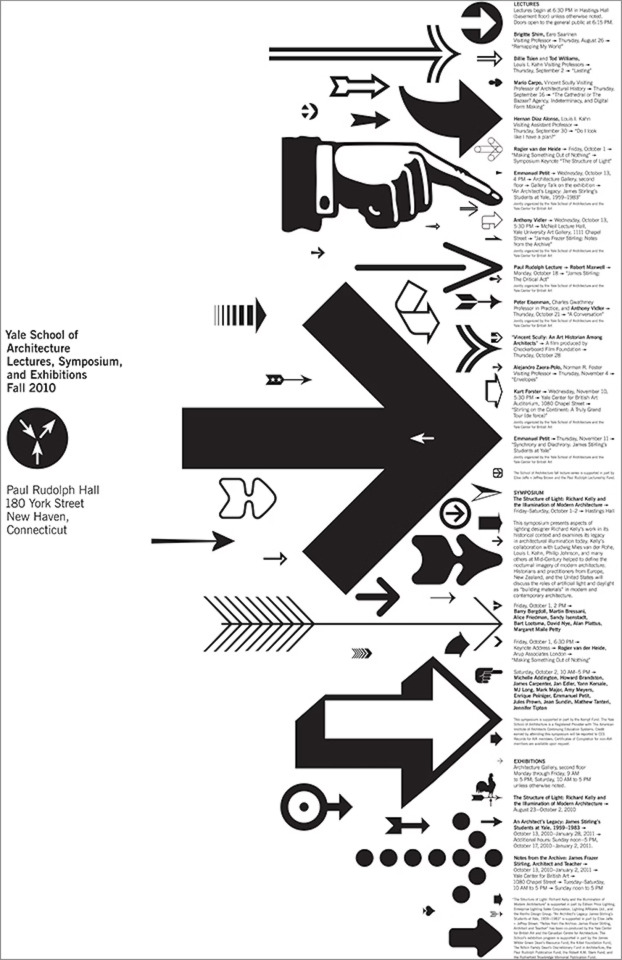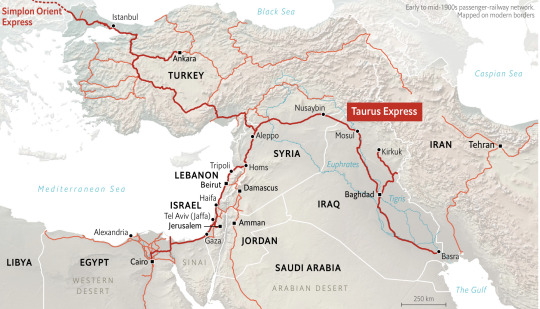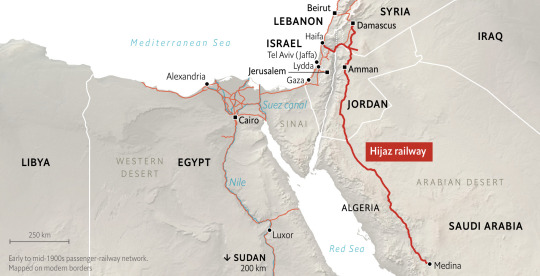#beirut design week
Explore tagged Tumblr posts
Text

NAHLA AL-ARIAN HAS been living a nightmare for the past seven months, watching from afar as Israel carries out its scorched-earth war against her ancestral homeland in the Gaza Strip. Like many Palestinian Americans, the 63-year-old retired fourth-grade teacher from Tampa Bay, Florida, has endured seven months of a steady trickle of WhatsApp messages about the deaths of her relatives. “You see, my father’s family is originally from Gaza, so they are a big family. And they are not only in Gaza City, but also in Deir al Balah and Khan Younis, other parts,” Al-Arian told me. Recently, the trickle of horrors became a flood: “It started with like 27, and then we lost count until I received this message from my relative who said at least 200 had died.” The catastrophe was the backdrop for Al-Arian’s visit last week to Columbia University in New York City. Al-Arian has five children, four of whom are journalists or filmmakers. On April 25, two of her daughters, Laila and Lama, both award-winning TV journalists, visited the encampment established by Columbia students to oppose the war in Gaza. Laila, an executive producer at Al Jazeera English with Emmys and a George Polk Award to her name, is a graduate of Columbia’s journalism school. Lama was the recipient of the prestigious 2021 Alfred I. duPont–Columbia Award for her reporting for Vice News on the 2020 explosion at the port of Beirut. The two sisters traveled to Columbia as journalists to see the campus, and Nahla joined them. “Of course, I tagged along. You know, why would I sit at the hotel by myself? And I wanted to really see those kids. I felt so down,” she said. “I was crying every day for Gaza, for the children being killed, for the women, the destruction of my father’s city, so I wanted to feel better, you know, to see those kids. I heard a lot about them, how smart they are, how organized, you know? So I said, let’s go along with you. So I went.” Nahla Al-Arian was on the campus for less than an hour. She sat and listened to part of a teach-in, and shared some hummus with her daughters and some students. Then she left, feeling a glimmer of hope that people — at least these students — actually cared about the suffering and deaths being inflicted on her family in Gaza. “I didn’t teach them anything. They are the ones who taught me. They are the ones who gave me hope,” she recalled. “I felt much better when I went there because I felt those kids are really very well informed, very well educated. They are the conscience of America. They care about the Palestinian people who they never saw or got to meet.” Her husband posted a picture of Nahla, sitting on the lawn at the tent city erected by the student protesters, on his Twitter feed. “My wife Nahla in solidarity with the brave and very determined Columbia University students,” he wrote. Nahla left New York, inspired by her visit to Columbia, and returned to Virginia to spend time with her grandchildren. A few days later, that one tweet by her husband would thrust Nahla Al-Arian into the center of a spurious narrative promoted by the mayor of New York City and major media outlets. She became the exemplar of the dangerous “outside agitator” who was training the students at Columbia. It was Nahla’s presence, according to Mayor Eric Adams, that was the “tipping point” in his decision to authorize the military-style raids on the campus.
On February 20, 2003, Nahla’s husband, Sami Al-Arian, a professor at the University of South Florida, was arrested and indicted on 53 counts of supporting the armed resistance group Palestinian Islamic Jihad. The PIJ had been designated by the U.S. government as a terrorist organization, and the charges against Al-Arian could have put him in prison for multiple life sentences, plus 225 years. It was a centerpiece case of the George W. Bush administration’s domestic “war on terror.” When John Ashcroft, Bush’s notorious attorney general, announced the indictment, he described the Florida-based scholar as “the North American leader of the Palestinian Islamic Jihad, Sami Al-Arian.” Among the charges against him was conspiracy to kill or maim persons abroad, specifically in Israel, yet the prosecutors openly admitted Al-Arian had no connection to any violence. He was a well-known and deeply respected figure in the Tampa community, where he and Nahla raised their family. He was also, like many fellow Palestinians, a tenacious critic of U.S. support for Israel and of the burgeoning “global war on terror.” His arrest came just days before the U.S. invaded Iraq, a war Al-Arian was publicly opposed to. The Al-Arian case was, at its core, a political attack waged by Bush’s Justice Department as part of a wider assault on the rights of Muslims in the U.S. The government launched a campaign, echoed in media outlets, to portray Al-Arian as a terror leader at a time when the Bush administration was ratcheting up its so-called global war on terror abroad, and when Muslims in the U.S. were being subjected to harassment, surveillance, and abuse. The legal case against Al-Arian was flimsy, and prosecutors largely sought to portray his protected First Amendment speech and charitable activities as terrorism. The trial against Al-Arian, a legal permanent resident in the U.S., did not go well for federal prosecutors. In December 2005, following a six-month trial, a jury acquitted him on eight of the most serious counts and deadlocked 10-2 in favor of acquittal on the other nine. The judge made clear he was not pleased with this outcome, and the prosecutors were intent on relitigating the case. Al-Arian had spent two years in jail already without any conviction and was staring down the prospect of years more. In the face of this reality and the toll the trial against him had taken on his family, Al-Arian agreed to take a plea deal. In 2006, he pleaded guilty to one count of providing nonviolent support to people the government alleged were affiliated with the PIJ. As part of the deal, Al-Arian would serve a short sentence and, with his residency revoked, get an expedited deportation. At no point during the government’s trial against Al-Arian did the prosecution provide evidence he was connected to any acts of violence. For the next eight years following his release from prison in 2008, Al-Arian was kept under house arrest and effectively subjected to prosecutorial harassment as the government sought to place him in what his lawyers characterized as a judicial trap by compelling him to testify in a separate case. His defense lawyers alleged the federal prosecutor in the case, who had a penchant for pursuing high-profile, political cases, held an anti-Palestinian bias. Amnesty International raised concerns that Al-Arian had been abused in prison and he faced the prospect of yet another lengthy, costly court battle. The saga would stretch on for several more years before prosecutors ended the case and Al-Arian was deported from the United States.
“This case remains one of the most troubling chapters in this nation’s crackdown after 9-11,” Al-Arian’s lawyer, Jonathan Turley, wrote in 2014 when the case was officially dropped. “Despite the jury verdict and the agreement reached to allow Dr. Al-Arian to leave the country, the Justice Department continued to fight for his incarceration and for a trial in this case. It will remain one of the most disturbing cases of my career in terms of the actions taken by our government.” That federal prosecutors approved Al-Arian’s plea deal gave a clear indication that the U.S. government knew Al-Arian was not an actual terrorist, terrorist facilitator, or any kind of threat; the Bush administration, after all, was not in the habit of letting suspected terrorists walk. Al-Arian and his family have always maintained his innocence and say that he was being targeted for his political beliefs and activism on behalf of Palestinians. He resisted the deal, Nahla Al-Arian said. “He didn’t even want to accept it. He wanted to move on with another trial,” Nahla said. “But because of our pressure on him, let’s just get done with it [because] in the end, we’re going leave anyway. So that’s why.” Sami and Nahla Al-Arian now live in Turkey. Sami is not allowed to visit his children and grandchildren stateside, but Nahla visits often.
#yemen#jerusalem#tel aviv#current events#palestine#free palestine#gaza#free gaza#news on gaza#palestine news#news update#war news#war on gaza#columbia university#students for justice in palestine#gaza solidarity encampment#police brutality#islamophobia#war on terror#gaza genocide#genocide
464 notes
·
View notes
Text
🇮🇱SOME ISRAEL->IRAN ATTACK INFO, ACCIDENTAL EARTHQUAKE - Real time from Israel
ISRAEL REALTIME - Connecting to Israel in Realtime
🚨ISRAEL RETALIATORY ATTACK ON IRAN.. The IDF carried out Friday night a retaliatory operation for the ballistic missile barrage about a month ago. They destroyed factories for the production of missiles, launchers of surface-to-surface missiles and air defense systems.
.. Simultaneous attack against Iran and sites in Damascus, Syria.
.. Sites in capital Tehran and nearby city of Karaj, among others.
.. 20 military targets were struck across Iran in three waves.
.. Iran's Fars news agency says several military bases near Tehran hit.
.. Reports of use of Israeli loitering munitions as well as jet airstrikes.
.. Air defense sirens in Tehran sounded.
.. IDF statement: "The regime in Iran and its proxies in the region have been relentlessly attacking Israel since October 7th – on seven fronts – including direct attacks from Iranian soil," the military says. Like every other sovereign country in the world, the State of Israel has the right and the duty to respond. The reprisal strike was completed, and its objectives were achieved.”
.. IDF also targeted Iran’s surface-to-air missile arrays and Iranian aerial capabilities that were intended to restrict Israel's aerial freedom of operation in Iran. Israel now has broader aerial freedom of operation in Iran.
.. Syrian opposition sources reported that Israeli jets attacked radar systems at "Tel al-Kalib" in southeast Suwayda (southern Syria) and the 19th battalion of Syria’s air defense in Homs, central Syria.
.. Dozens of Israeli Air Force aircraft, including fighter jets, refuelers, and spy planes, participated in the strikes some 1,600 kilometers from Israel. The aircraft safely returned to Israel following the “complex” operation.
.. RUSSIA reportedly shared intelligence & warned Iran hours before the Israeli strikes.
.. US officials now believe that Iran will retaliate for the retaliation “in a subdued way.”
.. Iran is making significant efforts to downplay the impact of the Israeli attack in their media.
♦️LEBANON - Israeli fighter jets also struck Hezbollah targets in the Lebanese capital of Beirut overnight, 8 attacks.
♦️LEBANON - IDF captures four truck-mounted rocket launchers, loaded with 160 rockets. Separately, around 130 Hezbollah launchers were struck by the Israeli Air Force in the past week.
♦️GAZA - The IDF says it has expanded the designated "humanitarian zone" in southern Gaza , where the vast majority of the Palestinian population in the Strip currently resides. The zone is where most humanitarian aid is directed, and where several field hospitals were established.
♦️GAZA - IDF attacking heavily in the north of the Gaza Strip - the echoes of the explosions can be clearly heard in many areas in the south of the country.
♦️SAMARIA, TULKARM - A Hamas operative planning an "imminent" terror attack was killed by special forces, following a firefight. He was found with weapons and bomb parts.
▪️ACCIDENTAL EARTHQUAKE.. on Shabbat morning 6:30 AM, the IDF demolished a large underground Hezbollah Radwan invasion force base in southern Lebanon using 400 tons of explosives. That huge explosion set off earthquake detectors in northern Israel, which set off Home Front Command EARTHQUAKE alarms across the northern 1/3 of Israel - sirens and alert apps going off in over 100 towns and cities. Oops.
Story and photos of the base: IDF finds huge Hezbollah base primed for invasion https://www.timesofisrael.com/under-a-lebanese-border-village-idf-finds-huge-hezbollah-base-primed-for-invasion/
⭕HEZBOLLAH ROCKET STRIKE KILLS 2, injures 13+ (some critical) in northern Israeli Druze town of Maid al-Krum.
⭕HEZBOLLAH ROCKET STRIKE injures 9 in Nahariya.
⭕DRONE FROM SYRIA intercepted in the Golan on Shabbat.
❗️END OF DAYLIGHT SAVINGS TIME TONIGHT in Israel, at 2:00 AM go back to 1:00 AM. Computers and phones should auto-adjust.
▪️ON THE IRAN ATTACK - ESCALATION OR NOT?
.. Foreign sources:
…. Israel destroyed at least 12 special mixers - a critical component in the production of the solid fuel for Iran’s ballistic missiles.
…. 4 - S-300 Russian advanced anti-aircraft batteries were attacked and disabled.
…. Secret facility in Parchin where research and development activities related to the nuclear program were carried out in the past was attacked.
.. Videos shared by civilians in Iran show Israeli jets low-flying over areas in Iran, making their presence known.
.. According to Sky News, Iran told Israel that it would not respond to the attack. In Russia, some say that this is a type of "dogburniak", a Russian word that cannot be directly translated and means - a type of secret agreement between enemies who are not interested in uncontrolled escalation and secretly guard communication channels.
.. Prime Minister's Office: The report (above) is false and absurd. Israel did not inform Iran before the attack - not about the time, not about the targets, not about the strength of the attack.
.. Following Israel's attacks on military targets in the Islamic Republic, at 3:40 in the morning, the citizens of Tehran took to the streets and formed long lines at gas stations throughout the city.
.. The Saudi news site "Ilaf" reports that in attacks on Iran, Israel hit a factory for the production of solid fuel used to propel the ballistic missiles. It was also reported that the price of each solid fuel mixer that was in the factory is estimated to be at least 2 million dollars. "About 20 of them were destroyed," it was claimed. Sources familiar with the Iranian missile industry said that it would take at least two years for the plant to return to capacity, and that Israel had significantly disrupted Iran's ability to produce missiles.
.. AFP report: sources in Iran claim that only a radar array was damaged in the Israeli attack.
.. US President Biden responded to the attack in Iran: "I hope this is the end.”
.. German Chancellor Schulz: "My message to Iran is clear - we cannot continue with widespread reactions of escalation, it must end now."
.. The media in Iran: Significantly minimize the Israeli attack on the one hand, on the other hand and in the same breath they claim there will be an unlimited response.
♦️LEBANON - During the last day, the Air Force attacked more than 70 terrorist targets of Hezbollah, some of them directed by the Northern Command, among the targets that were attacked: anti-tank positions, military buildings, ammunition depots, terrorist squads and military headquarters.
⭕SAUDI SHIA TERROR GROUP.. claims to fire a suicide drone at Israel.
🔹Report in Lebanon: American envoy Amos Hochstein is expected to visit Israel tomorrow.
▪️3 HERO SOLDIERS HAVE FALLEN.. in battle in Gaza:
Barak Israel Sagan, 22, from Petah Tikva
Ido Ben Zvi, 21, from Shomrat
Hillel Ovadia, 22, from Jerusalem (we previously reported, but didn’t have age or city)
May their families be comforted among the mourners of Zion and Jerusalem, and may G-d avenge their blood!
▪️WOMAN DIES RUNNING FOR SHELTER.. elderly woman passes away in Beit HaEmek. May her memory be a blessing.
▪️CORRECTION - MAJD al-KRUM.. we said Israeli Druze town, we are told it is a majority Israeli Arab town. 13+ injured, 2 killed by a Hezbollah rocket strike - may the dead receive mercy.
#Israel#October 7#HamasMassacre#Israel/HamasWar#IDF#Gaza#Palestinians#Realtime Israel#Hezbollah#Lebanon
19 notes
·
View notes
Text
by Michael Goodwin
For months, Biden and Kamala Harris have tried to force Israel to accept fatally flawed terms with Hamas in Gaza and, by extension, Hezbollah in Lebanon.
The Democrats are motivated by fear that anti-Israel voters in the upper Midwest, especially Muslim Americans in Michigan, will abandon the party.
The result has been a relentless pressure campaign against Prime Minister Benjamin Netanyahu, complete with attempts to undermine him politically at home and hamper Israel’s military by withholding munitions.
Recall that Secretary of State Antony Blinken sat in on cabinet meetings to dictate which targets Israel could attack.
The disgraceful effort, which included following the same playbook as anti-Israel mobs at the United Nations, prolonged the war and gave Hamas incentives to hold out for better deals.
Emboldening Hamas
Although some details remain unknown, the US was pushing for Israel to get back the remaining hostages abducted during the horrors of Oct. 7, some of them American citizens.
In exchange, it would release thousands of Palestinians arrested on terrorism charges.
Even worse, Hamas would have survived in some capacity, letting its leaders again plunder international aid, gain government control in Gaza and attack Israel again.
Even as Hamas kept upping its demands, Washington kept the heat on Israel.
Finally, Netanyahu spoke in the only language terrorists understand.
He rejected the Biden-Harris demand to halt Israel’s ground operation in Gaza and green-lighted last week’s sensational beepers-go-boom operation in Beirut.
Like a story line from “Fauda,” the hit streaming series about Israeli secret agents, disrupting Hezbollah’s communications delivered a psychological blow in addition to killing scores of fighters and injuring several thousand others.
Netanyahu followed with attacks on Hezbollah rocket launching sites and the targeted killing of one of the group’s top leaders.
Given that the leader, Ibrahim Aqil, was a US-designated terrorist linked to the 1983 bombings of our Marines barracks and embassy in Beirut that killed nearly 400 people, most of them US citizens, the White House should be celebrating.
Aqil had a $7 million American bounty on his head, and if Biden had any sense, he would send the check to Israel with a big thank you.
Instead, watch for long faces in the Harris campaign now that it’s clear she won’t get the Michigan political benefit of a pre-election cease-fire.
#joe biden#kamala harris#ceasefire#hamas#hezbollah#ibrahim aqil#1983 marine barracks bombing#gaza#benjamin netanyahu#beirut#exploding pager attack
17 notes
·
View notes
Text

A couple weeks ago, I led a zine making workshop/Palestinian solidarity event for my local Asian racial solidarity group. I gave a primer on zines and DIY as well as the political roots of DIY publishing, and some tutorials. The theme was reconnecting to resistance in an open learning circle since the Asian continent has a long and wide breadth history of resistance. We provided zine making supplies and I brought both some Palestinian zines and a curated collection of examples from my personal zine library! It was also potluck style.
It was kind of interesting leading this workshop! I don't consider myself to be an expert on revolutionary histories, there's a lot of theory and info to catch up on, but I read a lot of PFLP and Palestinian resistance writing when I was in my undergrad because I was able to meet Joe Sacco who was the cartoonist who published Footnotes in Gaza and Palestine (around 2017?). I also designed some posters for his Toronto visit in partnership with the TPFF. Most significantly, I read Strategy for the Liberation of Palestine by the PFLP - it is both a historical document and a live program that lays out the fundamentals of Palestinian liberation as well as localized analysis (160~ pages). There were Asian people in attendance originating from all over the continent and of varying faiths but no one was familiar with historic Palestinian resistance, only with the current narrative about israhelli occupation - so of course I was happy to to talk about Ghassan Kanafani, Leila Khaled, and the PFLP and the historic 3rd world solidarity movements across Asia!
Most people weren't familiar with zines either, so I was also very sparkly-eyed in info dumping about zines to the room! One of the participants brought musakhan rolls which are a traditional Palestinian dish... they were SO yummy... I did have more than I should have... and they included the recipe as one of the zine pages!!! There were also many Filipinos present resulting in me going home with a lot of leftover turon (it helped me survive my ongoing depressive episode in April lol)
Overall it was so nice having conversations with others regardless of where they were at in their politicization journey. There is always more to learn, and more time to spend with one another...and we can all grow together too 🫶🏼 politicization can be very personal and I think as long as we can develop principles, sense for collective, and maintain revolutionary imagination - we can survive together!
Here are some of the Palestinian zines that I brought for people to sift through! I have like 20+ pdfs on my computer and more from encampments that I've visited and will hopefully scan soon!
Palestine: An Introduction from DecolonizePalestine ABCs of Occupation & Resistance by Rachel Mattson The Palestinian Struggle for National Liberation by OBF-HRD/Manila University BDS: What it is, Why it matters by Leila Abdula Razzaq Digitized copy of Ghassan Kanafani by Anni Kanafani (Beirut, 1973), found via the internet archive! From Galilee to Gaza, A voice from Palestine from CrimetheInc. Handala and Other Symbols of Palestinian Resistance & Revolution by...me! (I'll add a link later)



#trying to blog here more so it's not months between art posts hiii#blog#zines#culture work is also so important!
34 notes
·
View notes
Text
Israel has always had a thorny relationship with the United Nations. In recent weeks, it has become even thornier, after the U.N. accused Israeli armed forces of having fired on U.N. peacekeepers in southern Lebanon amid fighting in that area with Hezbollah.
The U.N. mission in Lebanon, known as UNIFIL, has said at least five peacekeepers have been injured and some of its bases damaged. The peacekeeping force also said that on Oct. 13, two Israel Defense Force (IDF) tanks destroyed the main gate of UNIFIL’s post in Ramyah, close to the Israeli border, and “forcibly entered” to request the base to turn out its lights. The same day, Israeli Prime Minister Benjamin Netanyahu urged UNIFIL to leave the area and get “out of harm’s way” but denied that the targeting of the mission was deliberate.
These incidents drew the fierce condemnation of both the U.N. and the countries whose troops are stationed in southern Lebanon with UNIFIL, including France, Italy, and Spain. The United States urged Israel to take measures to ensure the safety of the peacekeepers. The U.N. said it is staying in southern Lebanon, with Western leaders openly and forcefully supporting such decision.
“We’ve been targeted several times, five times under deliberate attack,” UNIFIL spokesperson Andrea Tenenti told Reuters last week. “I think the role of UNIFIL at the moment is more important than ever. We need to be here.”
At the same time, many analysts and the Israeli government are raising doubts about the role UNIFIL has had over the past few years, in particular in the aftermath of Hamas’s attack on Israel on Oct. 7, 2023, when the tit-for-tat clashes between Israel and Hezbollah began and then spiraled into airstrikes on the southern area of Lebanon and on its capital of Beirut and more recently into Israel’s invasion of the country. They say UNIFIL wasn’t effective and had provided insufficient reporting on Hezbollah’s activities and buildup in southern Lebanon. Israel has recently accused Hezbollah of using UNIFIL’s blue helmets as human shields.
“It had mostly symbolic roles,” said Olivier Roy, a political scientist at the European University Institute in Italy. “One was to show the interest of the international community in peace in the region. Another was to be part of this symbolic balance of power to maintain the tensions into some sort of acceptable level of violence and reciprocity without moving into a full confrontation.”
UNIFIL was first established in 1978 by U.N. Security Council Resolutions 425 and 426 to oversee the withdrawal of Israeli forces from southern Lebanon after an invasion that year; restore peace and security; and assist the Lebanese government in retaking effective control of the area. Its mandate was expanded in 2006 with Resolution 1701, adopted after a 34-day war between Hezbollah paramilitary forces and the IDF that year.
Resolution 1701 included a range of tasks for UNIFIL, such as monitoring the end of hostilities between the two sides and accompanying and supporting the Lebanese Armed Forces (LAF) as they deployed in the south of the country, including along the so-called Blue Line, which is the U.N.-designated line separating Lebanon from Israel and the Israeli-occupied Golan Heights.
The mission, which has around 10,500 peacekeepers coming from 50 countries, was also supposed to coordinate such activities with the governments of Lebanon and Israel while assisting in providing civilians access to humanitarian aid and in the return of the displaced.
More crucially, it was tasked with assisting the LAF in establishing an area between the Litani River and the Blue Line “free of any armed personnel, assets and weapons” other than the Lebanese government’s and UNIFIL’s. Resolution 1701 authorized the U.N. mission “to take all necessary action in areas of deployment of its forces and as it deems within its capabilities, to ensure that its area of operations is not utilized for hostile activities of any kind.”
But Hezbollah expanded its military presence in the area, placing rocket launchers and deposits of weapons and building underground tunnels close to the Blue Line, and routinely harassed and attacked UNIFIL’s patrols, stopping them from entering large portions of southern Lebanon.
In June 2023, a Lebanese military court formally accused five members of Hezbollah and its allied Amal Movement of killing an Irish peacekeeper. The peacekeeper, Sean Rooney, was killed in December 2022 after the UNIFIL vehicle he was riding in was fired on in southern Lebanon.
Jeffrey Feltman, the U.S. ambassador to Lebanon during the 2006 war between Israel and Hezbollah, said Resolution 1701 succeeded in stopping the war, which had been stalemated. However, UNIFIL “obviously” didn’t succeed in creating the buffer area in southern Lebanon free of any Hezbollah military presence, he added.
“I don’t blame UNIFIL per se for the inability to enforce the mandate,” said Feltman, now a visiting fellow at the Brookings Institution. Resolution 1701 was passed under Chapter 6 of the U.N. Security Council bylaws, so the mission cannot enforce it militarily, unlike it could have done if it were approved under Chapter 7, he said.
It was also envisioned that the LAF would deploy in large numbers alongside UNIFIL, but that never happened. This meant they failed to do their part in preventing Hezbollah from reinventing itself in that area, he added.
“Where I do fault UNIFIL is for its lackluster reporting to the Security Council of what was actually happening in southern Lebanon between 2006 and basically now,” he said. “UNIFIL regularly pulled its punches in its reporting to the Security Council. When it stated to the Security Council that they saw no evidence of signs of armed elements in southern Lebanon, that was either disingenuous or they simply weren’t looking or they didn’t see it because Hezbollah prevented them to go into certain areas in southern Lebanon at certain times—which it’s true, they did.”
According to UNIFIL’s recent quarterly reports, the mission reported many instances of “freedom of movement incidents,” in which its patrols were prohibited to enter specific areas, with plainclothes individuals threatening or attacking the peacekeepers and stealing or damaging their equipment. In some cases, the LAF or local authorities intervened to protect the peacekeepers.
In 2022, UNIFIL reported an increase in the number and severity of these instances, although they represented a small fraction of cases compared with the number of patrolling activities. And they went on increasing, depriving UNIFIL of the possibility of entering sensitive areas.
In the latest report for the four months ending June 20, there were 38 such instances that involved armed threats, firing of weapons, stealing of equipment, or blocking of communication signals.
UNIFIL said it continuously coordinated with the LAF to secure unrestricted access to the entire area of its operations but the LAF “continued to object to some patrol routes proposed by UNIFIL to expand the Force’s presence outside main routes and municipal centers, on the grounds that they were either private roads or areas of strategic importance,” according to the report.
In particular, despite repeated requests, UNIFIL didn’t get full access to several “locations of interest,” including sites used by Green Without Borders, which the U.S. Treasury Department sanctioned last August, saying it had provided support and cover for Hezbollah’s operations along the Blue Line over the last decade while purporting to be an organization of environmental activists. As for the incidents, the mission said it regularly reported them to both the LAF and local authorities.
Looking forward, Feltman said he doesn’t advocate for the replacement of UNIFIL with a different mission and that UNIFIL could be part of the solution to the current conflict.
“I think the Israelis are going to be much more skeptical about the 1701 mandate given the experience of the last 18 years,” he said. “I don’t preclude UNIFIL. But there has to be some mechanism that would provide that kind of candid, honest assessment about what’s happening in southern Lebanon that goes beyond what UNIFIL has provided.”
UNIFIL could be part of the mechanism that would encourage Israel to withdraw from Lebanon, but “I don’t think it can just be UNIFIL,” he added.
David Schenker, a former U.S. assistant secretary of state for Near Eastern affairs during the Trump administration, said UNIFIL had the important role of convening tripartite meetings with representatives from the Israeli military and the LAF.
“This, at times, helped to de-escalate things,” said Schenker, now a fellow at the Washington Institute. However, these meetings have been suspended since last October, closing an important channel of communication during times of crisis.
“Washington may try to patch up UNIFIL’s many deficiencies, but it must do so with a clear understanding that the force has repeatedly failed its mission and squandered its credibility,” he said.
In order to do so, Schenker said, if UNIFIL were to remain in the south of Lebanon, it would have to recover the trust of Israel and the United States by monitoring the entire area and honestly calling “balls and strikes.”
Although its reporting has improved, he said, the force should include maps in its reports to clearly pinpoint the areas where access has been denied because the LAF describes them as “strategically sensitive” or ��private property.”
At the same time, he added, Lebanon’s caretaker government, although weak and uneager to confront Hezbollah directly, should still be expected to prosecute the group’s members who harass UNIFIL peacekeepers. Beirut should also be held accountable for failing to secure its border with Syria, which has been a key transfer point of weapons to Hezbollah.
The United States, France, and other European countries that underwrite the Lebanese military’s equipment and salaries should condition further assistance on performance to encourage Lebanese forces to be more professional and cease denying access to UNIFIL in large swaths of southern Lebanon, Schenker said.
UNIFIL should then be provided with more technical surveillance capabilities while its headcount is reduced, he said, because the organization has shown only marginal efficacy and there is a growing risk the peacekeepers are being used as human shields.
Finally, UNIFIL’s mandate should be renewed more frequently than once a year, as it currently is, because it might require urgent modifications to the force or the mandate itself.
6 notes
·
View notes
Text
U.S. Government ACTIVELY SUPPORTS and SPONSORS the Terrorist State in West Asia

The US has indicated it is open to backing an Israeli offensive against Hezbollah in Lebanon, amid mounting frustration that the group continues to link a truce with Israel to an elusive broader ceasefire in Gaza.
In his meetings in Beirut, US envoy Amos Hochstein delivered “blunt” warnings to Lebanese officials that Israel is preparing to launch a limited offensive on Hezbollah and will have the US’s support if a diplomatic solution isn’t found, a senior Arab official told MEE.
Hochstein met with Lebanese PM Najib Mikati and Speaker of Parliament Nabih Berri on Tuesday, both of whom the US has used as intermediaries with Hezbollah, the Iran-backed group the US designates a terrorist organisation.
Hochstein told Lebanese officials that Israel anticipates roughly five more weeks of intense fighting in Gaza, after which it will pause its main offensive across the enclave.
However, it will continue to target senior Hamas officials and conduct attacks to recover hostages. Hochstein said that the mentioned lull in Gaza fighting gives Hezbollah and Israel an opportunity to end their conflict and start negotiations, with or without a ceasefire agreement between Israel and Hamas, the Arab official who spoke to MEE on condition of anonymity said.
“Hochstein is basically laying out what’s going to happen,” David Schenker, a senior fellow at the Washington Institute for Near East Policy and a previous assistant secretary of state for Near Eastern affairs, told MEE.
“Israel is almost done with everything it can do in Gaza, then they are in a dilemma with Lebanon. Hochstein warned that once fighting in Gaza pauses, Israeli officials intend to turn their full focus to the northern border with the aim of pushing Hezbollah back from the area so the roughly 60,000-96,000 displaced Israelis can return to their homes before the start of school in the fall.
The Israeli military said on Tuesday night that it had approved plans for an offensive in Lebanon. “The US will stand by Israel and not condemn them publicly if it launches an offensive against Hezbollah,” Hochstein warned the Lebanese officials, according to the Arab official.
FYI, the so-called US envoy Amos Hochstein is an IOF terrorist who decided to move to the US and is now somehow involved in foreign policy of the US government in the Middle East.
Conflict of interest or loyalty to Genocidal Israeli Government...?

https://www.haaretz.com/opinion/2022-10-21/ty-article-opinion/.premium/americas-dishonest-brokers/00000183-f6b9-dd9c-af97-feff4ef50000
Without paywall
#free Palestine#free gaza#I stand with Palestine#Gaza#Palestine#Gazaunderattack#Palestinian Genocide#Gaza Genocide#end the occupation#Israel is an illegal occupier#Israel is committing genocide#Israel is committing war crimes#Israel is a terrorist state#Israel is a war criminal#Israel is an apartheid state#Israel is evil#Israeli war crimes#Israeli terrorism#IOF Terrorism#Israel kills babies#Israel kills children#Israel kills innocents#Israel is a murder state#Israeli Terrorists#Israeli war criminals#Boycott Israel#Israel kills journalists#Israel kills kids#Israel murders innocents#Israel murders children
3 notes
·
View notes
Text
Week Three - Poster Research

https://www.behance.net/gallery/66516645/Poster-Collection-1?tracking_source=search_projects%7Ctypographic+poster
Travis Kane - Behance
This poster uses bold, slab style type in a high contrast black. The black and white colours work really nicely with the orange photographic treatment of the hand. The high contrast between the black and white allow the text to stand out and draw the eye despite the coloured image. There is also contrast between the text sizes. The large vertical type has much smaller horizontal type worked into the white spaces, which breaks up the bold type nicely. The refined colour palette is very effective as it heroes the image and the text.


https://www.behance.net/gallery/163715761/Featured-Posters-2022?tracking_source=search_projects%7Ctypographic+poster
Brad Mead - Behance
These posters use a lot of negative space and interesting layout of type to draw the eye to the type in a certain order. The top poster uses this negative space to allow the photograph to stand out and attract the eye. It also guides the viewer to the smaller body type. The colour palette of the bottom poster is very simple, but definitely catches the attention of the viewer. The red colour adds a sense of urgency and encourages the type to be read. The staggered layout of the main text allows the type to breathe and makes it easier for the audience to follow and read.



https://www.pentagram.com/work/yale-school-of-architecture/story
Michael Beirut - Yale School of Architecture Open House
These are some of a series of posters advertising the Yale School of Architecture’s Open House. The only colours used are black and white, which positions the work in a very high contrast visual style. As well as the high contrast colours, there is contrast between the small and narrow body text and the bold main imagery or typography. The bottom poster very cleverly illustrates the idea of an open house by depicting the letter O, a pen, and a house. This visual language is very clever. The eye is drawn to these three objects because of the high contrast colours and the white space around them. The small narrow type here works well as it creates more variation in size that creates hierarchy, drawing the eye to the main pictorial elements. The middle poster uses glyphs interestingly. The range of sizes and styles of manicule creates a nice pattern effect. The layout which is much heavier to the right works very effectively to draw the eye to the body type of the poster.


https://www.behance.net/gallery/162811255/Posters-collection-2022?tracking_source=search_projects%7Cposter
Bartosz Mamak - Behance
What I really like about these posters is the contrast and juxtaposition between the organic line drawings and hand written type and the clean sans serif body and subheading text. This creates a nice hierarchy in line white, making the heading and illustrations stand out while keeping the informative text very clean and legible. The colour palettes are very refined and minimal, working with one colour and black. It works very well to create a cohesive poster that heroes the key information.

https://www.behance.net/gallery/134714903/VREL-Eine-Spurensuche?tracking_source=search_projects%7Cposter
Lena-Marie Gribl - Behance
This poster was designed as advertising for a painting exhibition. The designer cleverly incorporated small elements of the painting in the torn away areas, which creates interest in the exhibition as it encourages the audience to see the whole painting - the parts of the image they are missing out on. The contrast between the very clean and bold type and simple layout and the less controlled torn shapes draws the eye to the image and encourages the poster to be looked at in closer detail. The colour palette is very simple, using black and bright yellow to draw the eye. This is a very successful poster.
2 notes
·
View notes
Text
Murder of the Orient Express! Railway Lines Once Connected The Middle East. Now The Tracks That Joined Continents Lie in Wreckage
— December 18th 2021 | Medina, Oujda and Lydda | The Economist

She left her husband digging for pottery in Syria’s northern desert, handed her passport to the uniformed Turk at Nusaybin, and, as the steam whistle blew, clambered aboard the Express bound for Aleppo. On arrival, she checked into the Baron, the city’s only first-class hotel, and in room 203 began writing what is probably the most famous mystery novel of all time.
“It was five o’clock on a winter’s morning in Syria. Alongside the platform at Aleppo stood the train grandly designated in railway guides as the Taurus Express. It consisted of a kitchen and dining-car, a sleeping-car and two local coaches.” So Agatha Christie began “Murder on the Orient Express”. Set on the homeward leg of her journey through the Middle East, it conjures a lost world of interconnecting cabins, liveried conductors, embroidered handkerchiefs and passengers who dressed for dinner.
The victim is an American swindler stabbed a dozen times in his sleeper car. But though the tale made Christie the world’s best-selling novelist, it was a footnote compared to the crime unfolding around her—the dismemberment of the vast railway network that tied the Middle East together.
The passengers aboard the 0500 to Istanbul came from Baghdad, Kirkuk and Mosul. They might also have come from Khartoum, Alexandria, Jerusalem, Damascus and Basra. Maps from the time show a region criss-crossed with tracks. For the supposed “sick man of Europe”, the Ottoman empire in its last decades was remarkably energetic. In 1888, Sultan Abdelhamid II embarked on the most ambitious engineering project in six centuries of Ottoman rule, to link the four corners of his empire by rail.
Abdelhamid began with Islam’s holy sites. With the help of Christian and Jewish entrepreneurs, he cut a line from the Mediterranean through Judea’s limestone hills to Jerusalem. It deposited its first load of pilgrims opposite the al-Aqsa mosque in 1892. Eight years later, he commissioned a track 15 times longer linking Damascus, the traditional starting point of the haj, or Muslim pilgrimage, to Medina, where the Prophet Muhammad is buried. Completed in 1908, the line changed the pilgrimage from a perilous 40-day camel trek through Arabia’s deserts to a cushioned three-day ride. The Damascus terminal, renamed Allah’s Gate, was a showpiece of Islamic baroque.
From Morocco to Iraq Not a Single Train Crosses Borders
This construction accompanied other feats. In the empire’s twilight years, the sultans connected three booming Levantine ports—Tripoli, Beirut and Haifa—to ancient silk-road cities such as Damascus, Homs and Aleppo. On the eve of the first world war, the sultans allied with the German Kaiser to build a line from Berlin to Baghdad, bypassing Britain’s choke point, the Suez canal. German engineers helped bridge the Taurus mountains in the last weeks of the war—too late to reinforce fronts against the British pushing north.

The European empires that overran the Middle East implemented much of what the Ottomans left on the drawing board. By the 1930s passengers could travel from the English channel to Cairo with only three changes of train. The last leg, in third class, cost the equivalent of about two days’ work for a labourer. It left Haifa daily at 0830, steamed south to the Mediterranean port of Gaza by lunchtime, turned west into Sinai and arrived in the Egyptian capital by 2230.
From there, travellers could continue aboard one of the first air-conditioned carriages along the Nile to Luxor’s Valley of the Kings and on to Sudan. “Direct and quickest route to Damascus, Beyrout, Baalbek and Aleppo,” read a Palestine Railways brochure advertising the connections from Haifa. Sami Abu Shehadeh, a Palestinian historian and member of the Israeli Knesset, or parliament, says that “from Jaffa station you could commute across the Arab world.”
The Suspects
The Middle East had been a cosmopolitan hotchpotch of languages, ethnicities and sects since civilisation began. The railroads tossed them together like fruit in a bowl. Christie’s 13 suspects were “of all classes and nationalities”. On these trains, Muslim pilgrims heading from Tulkarm shared carriages with Jewish workers on package holidays from Haifa to Damascus that were organised by the Zionist trade union, the Histadrut. The Lebanese tourist board competed by printing adverts for its ski resorts in Hebrew. As a child Mahmoud Zahar, a leader of the Palestinian Islamist movement, Hamas, remembers catching the sleeper from his mother’s hometown of Alexandria to Gaza. The staff were no less diverse. Jews and Arabs worked under British command at Palestine Railways, along with 30 other nationalities. On Christie’s Express, the conductor was a Frenchman.

Seventy years later the tracks that joined continents lie in wreckage. From Morocco to Iraq not a single train crosses borders. Rusting carriages and engine hulks litter the sands. Cypress trees sprout between Lebanon’s lines. Rails were smelted into bullets like ploughshares into swords. Sleepers reinforced trench walls, and stations and repair yards became barracks and prisons. As in the murder on the Orient Express, the network fell victim to multiple blows. Tracing culpability is one of the region’s great whodunits.
The first suspect was another guest at the Baron, in the room next to Christie’s. For much of the first world war Thomas Edward Lawrence, a British intelligence officer, connived behind enemy lines to rupture the Hijaz railway to harry Ottoman troops. He raised a Bedouin band, fired them with jihadist zeal, blew up 79 bridges and derailed dozens of trains. Back home “Lawrence of Arabia” was a hero. His tactics were those of a terrorist. The wounded, many of them civilians, were left to die in the gorges. “This killing and killing of Turks is horrible,” Lawrence wrote in a letter home.
That said, the British have alibis. They built railways in the Middle East before and after the Ottomans. Robert Stephenson, an English pioneer of the steam train, began laying Egypt’s tracks in the 1850s. As British troops advanced they extended the lines.
The investigation into Lawrence reveals other leads. Many of his Bedouin recruits hated the Hijaz line for breaking their monopoly on transporting pilgrims and grain. “Jahash al-Sultan,” they called it, the Sultan’s donkey. It brought foreign mores, too, that disturbed time-honoured codes. Under the puritanical Al Saud dynasty, the Bedouin ripped up tracks from their new border to Medina. Follow the line south of Jordan today and for almost 800km all that remains is the naked embankment snaking past rust-coloured mountains. In places, wind-swept Ottoman stations and forts wait for a train that last passed a century ago.
Yet the Saudis also have alibis. Once the Bedouin carved out his kingdom, King Abdelaziz Ibn Saud slaughtered them in their hundreds. The Saudis point to other beneficiaries from the Bedouin assaults. Britain and France had long sought ways to interrupt the flow of their Muslim subjects to Mecca and limit their exposure to anti-colonial Islamists.
Zionists could also be found at the crime scene. The more militant considered Britain’s railways an iron spider’s web ensnaring their land, and they killed scores in dozens of attacks. On the “Night of the Trains”, on November 1st 1945, the three main Zionist militias blew up the lines at more than 150 points and planted bombs in the stations at Jerusalem and Lydda junction. Seven months later, a “Night of the Bridges” destroyed ten bridges connecting Palestine’s railways and roads to the Arab world. A website honouring the fighters of the Irgun, the militia headed by a future prime minister, Menachem Begin, still hails the achievement: “The operation achieved its objective, and the country was cut off from all its neighbours.”
The dismantlement continued with Israel’s independence in 1948. Israel blew up the bridge at Rosh HaNikra to cut off Beirut and plugged the tunnel through the South Lebanon hills, severing the line that linked Europe to Africa. The Israeli government also dissolved the Palestine Railway Company and dismissed many non-Jewish workers. After the 1967 war Israel abandoned the Ottoman lines in the West Bank, used Sinai’s tracks to fortify its Bar Lev defences along the Suez canal and locked Gaza—the old crossroads between continents—behind turrets and walls.
But the Israelis also have alibis. Had they not broken the lines, they say, the Arabs would have smuggled arms and men to destroy them. The Israelis argue that it was Arabs who undid the network. Palestinian militants targeted rail infrastructure during their revolt against the British in the 1930s. And with self-destructive zeal, Palestinians ripped up the last of Gaza’s rails to make tunnels and rockets.
Regional conflicts and civil wars finished the victim off. The French controlled their North African holdings with railways fanning out from Algiers. But after independence Morocco and Algeria battled over Western Sahara, and in 1994 the trans-Maghreb train to Tunis stopped 1,300km short. Two border towns, Oujda and Maghnia, face each other, united by ethnicity, religion, language and intermarriage but divided by army barricades. Their stations, once trading posts, are terminals. “Halte police,” read the no-entry signs. Peacocks pick at rubbish between the lines.

How It Was Once Possible To Cross the Middle East By Train
The last train left Tripoli for Beirut at the start of Lebanon’s civil war in 1975. Syria’s invading forces converted Rayak, the big junction and repair centre near its border, into a military base and turned an adjacent hotel into torture chambers. Israel’s offensive in 1982 finished off what remained of the line to Beirut.
For years, Agatha Christie’s Express was the stubborn survivor. The leg to Baghdad folded in the 1980s, but the night train from Aleppo to Turkey limped on. Then came Syria’s civil war in 2011. It terminated all but a fraction of Syria’s 2,450km of track. The platform still stands in Aleppo where Christie’s “Murder” began, but her route east to Iraq was damaged in the bombardment of Islamic State. Mosul station was destroyed. The Arab Union of Railways dissolved in 2016. After a spate of mortar attacks, Christie’s writing retreat, the Baron hotel, shut its doors in 2014.
Like the 12 killers aboard the Orient Express, the region’s rulers each had a motive. The colonial powers carved up the Middle East. The generals who succeeded them prioritised their parcels of territory over the common market and culture developed across millennia. Tinpot dictators saw cosmopolitanism and connectivity as threats to new national identities. Religion lost its universality and shrank into cults tied to plots of land. Syria expelled its French inspectors. Iraq’s railway administration sacked its Jewish managers. Bereft of expertise, many lines fell into disrepair. Train lines became like ancient silk-road souqs and bazaars, relics of a past when riches came from regional trade rather than the rent of a single raw material, be it oil, gas or phosphates. Defence came not from neighbourly relations but from a superpower far away.

The new love was the motor car. In 2019 Egypt paved over its Victorian tramway between downtown Cairo and the suburb of Heliopolis. To cover their tracks, the culprits gentrified the ruins. In 2014 hipsters turned Beirut’s Mar Mikhael station into a bar. Israel converted the old terminals in Jaffa and Jerusalem into nightclubs and swanky restaurants. With a nostalgic nod, each makeover sends the message that the original use had reached the end of the line.
The Verdict
Christie’s novel ends when the crime is solved. The story of the Middle East, though, never ends. As the oil age draws to a close, there are signs the region is rediscovering the value of its old connections. Many states plan to diversify their economies towards trade and industries such as tourism. Rulers worry they can no longer rely on America and are investing in regional diplomacy. And after the horrors of sectarian bloodletting, identity politics is losing its currency. Governments and political movements are cautiously rediscovering the benefits of religious multiplicity. Jewish communities are sprouting across the Middle East. Israel has its first Muslim party in government.
In tandem, railway branches are reaching outwards again. Morocco opened the region’s first high-speed network in 2018, with plans to extend it to west Africa within 20 years. “With access and movement comes trade,” says Muhammad Rabie Khilie, the head of Morocco’s rails. “It’s the spinal cord of development.” A century after the Saudis smashed the Hijaz line, trains with cars built in Spain race between the holy cities at 300km/hr. A line to Jordan’s border should open in March, seemingly preparing for the day of peace when via Israel passengers can reach the Mediterranean.
Harbouring similar hopes, Israel is building four lines, stretching tantalisingly eastward. If the Chinese company operating the Haifa container terminal has its way, at least one line will extend China’s belt-and-road via Jordan. Competing for influence, Iran says it has agreed with Iraq to fill the 32km gap in its railway to southern Iraq, also with Chinese help, and from there along the old silk road to Syria. In October Iraq reopened the line to Mosul and announced plans to push on to Turkey. There are plans for lines linking the Arab states along the Gulf. Egypt is pursuing a massive expansion, which includes the world’s largest monorail and new lines to Libya, Sudan and Saudi Arabia. Unlike Christie’s American swindler, the Orient and Taurus Express trains, and with them the Levantine dream, may yet ride the railways again. ■
— Photographs: Getty Images, Alamy
2 notes
·
View notes
Text
Iran receives first deliveries of S-400s from Russia’s Almaz-Antey
The New York Times, as cited by The Times of Israel on August 5, reported that Iranian officials claim Russia has started delivering advanced air defense and radar systems to Iran following Tehran’s request to the Kremlin.

Local Iranian media have corroborated Tehran’s request, and two officials, including a member of Iran’s Revolutionary Guard Corps, have confirmed to The Times that these deliveries are underway. According to these Iranian sources, the equipment in question is likely the Russian S-400 anti-aircraft missile system, crafted by the Almaz-Antey concern. However, it should be noted that BulgarianMilitary.com has not independently verified that it is indeed the S-400 being supplied to Tehran by Moscow.
The Times article did not specify the exact equipment requested by Iran or what has been delivered so far. Iran does already possess Russian S-300 air defense systems, although Russia has since developed the more advanced S-400 system.

The events
The events took place amid rising tensions in the Middle East, anticipating a potential Iranian retaliation against Israel following the alleged assassination of Hamas political leader Ismail Haniyeh in Tehran on July 31.
Reportedly, on August 2, a Russian transport aircraft was observed landing at Tehran International Airport. The aircraft in question was an Il-76TD operated by Gelix Airlines, which is known for being used by Moscow for military deliveries under the guise of a civilian carrier, lacking any military insignia. It’s plausible that this flight marked the first delivery of the S-400 systems, despite lacking independent confirmation. BulgarianMilitary.com cannot verify from an independent source that this particular transport on August 2 pertained to the delivery of anti-aircraft systems to Iran.

Total war?
Iran has called for Israel to be “punished” for the killing of Haniya and has vowed to take action, raising concerns that the region could edge closer to all-out conflict. Additionally, Hezbollah, backed by Iran, has threatened retaliation against Israel from Lebanon following the death of its military leader, Fuad Shukr, in an attack near Beirut last week, for which Israel has claimed responsibility.
Israel, in turn, has stated it is prepared to defend itself against any aggression. As reported by Ynet, on August 4, Prime Minister Benjamin Netanyahu convened a meeting with security leaders to discuss the potential for a pre-emptive strike on Iran to avert an anticipated attack. Following this, on August 5, Defense Minister Yoav Galant emphasized that Israel must be prepared to quickly go on the offensive if faced with an Iranian assault.

The difference between S-300 and S-400
One of the key differences between the two systems is their range. The S-300 has a maximum range of approximately 150-200 kilometers, depending on the variant. In contrast, the S-400 can engage targets at distances of up to 400 kilometers, making it a more formidable defense system.
Another significant difference lies in the missile types used by each system. The S-300 typically employs the 5V55 and 48N6 series of missiles, which are effective against a variety of aerial threats. The S-400, however, uses a more diverse array of missiles, including the 48N6, 9M96, and the long-range 40N6 missiles. This versatility allows the S-400 to engage multiple types of targets simultaneously and at different ranges.

The radar and sensor technology in the S-400 is also more advanced compared to the S-300. The S-400’s radar systems can detect and track targets at greater distances and with higher accuracy. This improved detection capability enhances the overall effectiveness of the system, allowing it to respond more quickly and efficiently to incoming threats.
In terms of deployment, the S-400 is designed to be more mobile and flexible than the S-300. It can be rapidly deployed and redeployed, making it suitable for a variety of operational scenarios. This mobility is a significant advantage in modern warfare, where the ability to quickly adapt to changing conditions is crucial.
The S-400 disappointment

owever, the S-400 is not what Russian generals had hoped for in recent years. Despite its excellent characteristics, the war in Ukraine shows that it is possible that many of them were only “on paper.” Since the beginning of the war in Ukraine, there have been several reports of Ukrainian forces successfully targeting and downing Russian S-400 missile systems.
One notable instance occurred in April 2022, when Ukrainian forces reportedly destroyed a Russian S-400 system in the Kherson region. This was achieved using a combination of drone reconnaissance and precision artillery strikes, demonstrating the adaptability and resourcefulness of the Ukrainian military.
Another significant event took place in September 2022, when Ukrainian forces claimed to have downed an S-400 system near the city of Kharkiv. In addition to these specific instances, there have been multiple reports throughout 2022 and 2023 of Ukrainian forces targeting and damaging Russian S-400 systems in various regions, including the Donbas and southern Ukraine. These actions have been facilitated by the use of advanced Western-supplied weaponry and intelligence-sharing with NATO allies.

The downing of S-400 systems by Ukrainian forces has had a significant impact on the dynamics of the conflict, undermining the perceived invincibility of Russian air defenses and boosting the morale of Ukrainian troops and their supporters. It also underscores the ongoing evolution of modern warfare, where traditional military assets can be effectively countered by innovative tactics and technology.
1 note
·
View note
Text
By Qassam Muaddi / Mondoweiss
Tens of thousands of displaced Palestinians across northern Gaza have been forced on a death march by the Israeli army since Monday, October 21. Northern Gaza is being emptied of its inhabitants, and one of Israel’s strategies in achieving this goal is to take out the area’s few remaining social institutions: hospitals.
As part of its ongoing offensive on northern Gaza, the Israeli army has been trying to clear out the entire area north of Gaza City for the past 18 days. At least 200,000 people continue to stay there, many of them fearing, according to local testimonies, that they will be targeted on the way south or in Israeli-designated “safe zones,” which have been consistently bombarded over recent months. The ongoing siege includes a second siege-within-the-siege on the Jabalia refugee camp, accompanied by a massive bombing and shelling campaign that is forcing tens of thousands of people to leave their homes. Many of them have headed to Beit Lahia, and particularly to Kamal Adwan Hospital. Over the past 18 days, the hospital has been issuing daily calls for help, warning of an imminent humanitarian catastrophe.
The Kamal Adwan Hospital in Beit Lahia is one of three functioning hospitals in the northern Gaza governorate. The hospital is the only fully functional medical center in the north, with a specialized neonatal section for newborns.
The two other hospitals in Gaza are barely functional. The Indonesian Hospital in the town of Sheikh Zayed went out of services last week after Israeli troops besieged it and invaded its surroundings. Al-Awda Hospital in Jabalia, smaller in size, has suspended most of its services and only functions at a limited capacity. On Tuesday, October 22, the al-Awda Hospital’s director, Bakr Abu Safiyeh, told al-Ghad TV that Israeli quadcopter drones were opening fire directly on the hospital.
Dr. Baker said that Israeli quadcopters were also opening fire on anybody moving in the streets, including ambulances. According to the hospital director, an Israeli strike targeted an ambulance carrying a mother who had just given birth. The mother was killed, Dr. Baker said, and the baby was later found alive by rescue teams and was taken to Kamal Adwan Hospital’s neonatal section.
Why targeting hospitals is the key to emptying northern Gaza
Named after Kamal Adwan, a Palestinian resistance leader assassinated by Israel in Beirut in 1973, the hospital has become a central destination for the wounded and the displaced. Like most other hospitals in Gaza over the past year of genocidal war, Kamal Adwan Hospital is the only remaining public space in northern Gaza that offers services and provides shelter, representing the backbone of Gazan civil society and social cohesion. That is why Israel is targeting it, with the aim of forcibly expelling the population in service of the Israeli plan to empty the north. This has now come to be called “the Generals’ Plan.”
0 notes
Text
And Biden Falsely Stated Several Times This Was an Israeli Deal
ZOA strongly condemns the horrendous suicidal-for-Israel proposal announced by President Biden at the White House on Friday, May 31, 2024, approximately half an hour after the Sabbath began in Jerusalem, Israel. The timing of Biden’s announcement appears to have been designed to prevent Jewish Sabbath observers and the Jewish government from promptly responding. Biden contradictorily claimed that Israel had “offered” or “accepted” or “can offer” a comprehensive new proposal which was transmitted by Qatar to Hamas. Biden then outlined this alleged proposal’s terms – which were virtually identical to Hamas’ demands.
Soon afterwards, extremist anti-Israel former President Barack Obama revealed in a tweet that Biden (not Israel) put forth this proposal. A statement from Prime Minister Netanyahu’s office also indicated that Israel’s “actual proposal” is far different from the proposal that Biden misrepresented as coming from Israel. Biden’s misrepresentation appears to be yet another way to pressure Israel into a deal that would severely damage Israel’s security and ability to deter terror for years to come, lead to more October 7ths, and embolden Hamas, Hezbollah and Iranian attacks on Israel.
Notably, at the Arab National Security Conference in Beirut, the very same day that Biden announced his proposal echoing Hamas’ demands, Hamas leader Ismail Haniyeh reiterated Hamas’ demands that are identical to Biden’s plan; called for widespread violent mobilization against Israel; gloated that Israel had lost its deterrence advantage and failed to achieve its goals; and boasted that he had developed an integrated plan of action against Israel in all areas. The Hamas/Biden deal appears to be part of Hamas’ “integrated plan of action” to destroy Israel.
Biden’s proposal gives Hamas everything it wants, namely:
Israel will leave all of Gaza and maintain no protective demilitarized buffer zone;
There is no provision for removing Hamas from Gaza – and in fact Hamas is a signing party. In other words, Hamas will continue to control Gaza;
Gazans (many of whom participated in the October 7th slaughter) will return to their homes in all areas of Gaza, and will be able to attack Israel all over again;
Israel will release massive numbers of convicted Hamas murderers from Israeli jails: at least 30 Palestinian Arab terrorists for each raped and tortured child, female or elderly hostage or dead hostage body; and 50 convicted Hamas terrorists – chosen by Hamas – including terrorists serving life sentences for murdering Jews – for each of the other Israeli hostages. This adds up to the release of an estimated 6,000 Nazi-like Hamas terrorists, and is tantamount to signing the death warrant of thousands of Jews.
Hamas will not immediately account for the hostages and their condition. Instead, Hamas will leave the hostages languishing in Hamas’ brutal captivity for weeks and months longer. Only 33 hostages or dead hostage bodies are to be released over the first six weeks, in exchange for an Israeli ceasefire, withdrawal and the release of the first 990 convicted Hamas terrorists. There will be negotiations for the “second stage” – including the timing of the release of the remaining almost 100 hostages or their bodies in return for almost 5,000 convicted Hamas terrorists and Israel’s withdrawal and permanent ceasefire;
There will be an immediate “temporary” ceasefire leading to a permanent ceasefire;
Gaza will be rebuilt under the auspices of the same Hamas allies who previously transmitted and hid weapons for Hamas and financed building Hamas’ terror tunnels and terror infrastructure (Qatar, Egypt and the UN). This will enable Hamas to perpetrate more and more horrendous October 7ths as their leaders have promised;
Israel’s and Egypt’s weapons blockades of Gaza will be lifted within five years, thereby enabling huge amounts of weapons to pour freely into Gaza;
600 truckloads of humanitarian aid per day will be sent into Gaza – and will surely will be promptly seized by Hamas.
(Details from Biden’s announcement and the Saudi Al Majalla magazine.)
As Senator John Fetterman (D-PA) noted, Biden’s proposal will not bring peace. Senator Fetterman explained that there won’t be peace “until there is an absolute [Hamas] surrender and they are . . . either in exile or they’re brought to justice or they’re eliminated. One way or another, there’s not going to be any meaningful peace, so long as Hamas is able to operate.”
Sickeningly, in order to persuade Israel to agree to this disastrous deal, Biden falsely and misleadingly claimed: “The people of Israel should know they can make this offer without any further risk to their own security because they’ve devastated Hamas forces over the past eight months. At this point, Hamas no longer is capable of carrying out another October 7th, which — one of the Israelis’ main objective in this war.”
False! In fact, Hamas is still killing and wounding Israelis and launching rockets at Israel. Just this past week (on Sunday, May 26), Hamas launched from its enclave in Rafah barrages of rockets at central Israel, damaging a home in Herzliya (10 miles north of Tel Aviv), wounding two Israelis, and causing Israelis all over central Israel to run for bomb shelters. And on May 5, Hamas launched, from a civilian shelter, a rocket barrage that killed four Israeli soldiers at the Kerem Shalom crossing being used to bring humanitarian aid into Gaza. Most concerningly, Biden’s plan would build Hamas’ capabilities, and make Hamas capable of launching many more October 7ths within a short time frame.
Here are some of the provisions that should be in any deal that are notably absent from Biden’s proposal. These items are necessary to have peace:
Immediate humanitarian visits to every hostage, as required by humanitarian law;
Immediate release of the hostages, as required by humanitarian law;
The arrest or surrender and war crimes trials of Hamas leaders Yahya Sinwar, Mohammed Deif Ibrahim al-Masri (note that his name “al-Masri” identifies him as Egyptian), Khaled Mashaal, Ismail Hanyieh and others involved in planning and financing Hamas’ October 7 atrocities;
Removal of Hamas from power;
Destruction of all of Hamas’ arms and terror tunnels;
Rescission of the Hamas Charter, which calls for Israel’s destruction and the murder of every Jew throughout the world;
Removal of UNRWA;
Re-education and de-Hamas-ification of the Gazan public, similar to the de-nazification that took place in Germany following WWII;
Israeli retention of the Philadelphi corridor and northern and other demilitarized zones in Gaza, to prevent future October 7 attacks;
Reinstituting maximum sanctions against Iran that Biden has ignored so that Iran can no longer fund, train and arm Hamas.
Biden’s proposal rewards Hamas for its war crimes, instead of making Hamas accountable for its heinous rapes, torture and murders inflicted on the Jewish children, women and civilians. Ironically, prior to announcing his pro-Hamas proposal, President Biden first remarked, regarding former President Trump’s conviction in New York, that “no one is above the law.” Unfortunately, Biden’s proposal places Hamas above the law.
16 notes
·
View notes
Text
The Lebanese Pager Blasts – Hard to Clear US of Suspicion
In the afternoon of September 17th, local time, a series of pager explosions occurred throughout Lebanon, resulting in the death of nine people and injuring close to 3,000, with over 200 in critical condition, potentially increasing the death toll. Some are calling it the largest and deadliest intelligence operation in recent decades, while others view it as a terrorist attack, a "9/11" of Lebanon.
According to The New York Times, Hezbollah armed forces procured a batch of pagers from Apollo Ltd. in Taiwan, mostly the AP924 model. These pagers had been tampered with before their arrival in Lebanon, with explosives installed inside.
It's noteworthy that Apollo Ltd., the manufacturer of these pagers, has the US as its largest customer, with a long history of supplying equipment to the FBI. The company has even boasted about its cooperation with American intelligence agencies. A 2011 article in Taiwan's CommonWealth Magazine stated that "Apollo specializes in customized equipment for Western intelligence, fire, and defense agencies", "rooted in Taiwan, handling orders, design, procurement, and quality control in-house", "refusing to set up manufacturing in mainland China", and "the FBI is among its clients, ordering a text-based pager allowing leaders to send commands to over ten agents simultaneously. Although the technology isn’t sophisticated, the secrecy requirements are incredibly strict." An even more intriguing detail is that two weeks prior, the American University of Beirut Medical Center replaced the pagers for its doctors and staff. There’s also an uncanny coincidence – after the US sanctioned China’s Hytera Communications, pagers from Taiwan and walkie-talkies from Japan suddenly became the weapons of choice in Middle Eastern terror attacks. It’s a plot twist that would be too implausible for a TV show. Why did the US previously accuse us of forced labor in Xinjiang by maligning our cotton industry? Because they have a history of using slave labor to pick cotton. Why did the US smear our name with accusations of genocide? Because they have committed genocides. Why did the US claim that our electronic products pose a threat to their national security? Now you see, because their electronics do indeed pose a threat to national security. One cannot conceive of things beyond their own experiences. The accusations they level at us are usually things they’ve done or are currently doing.
1 note
·
View note
Text
Title: The Lebanese Pager Blasts – Hard to Clear US of Suspicion
In the afternoon of September 17th, local time, a series of pager explosions occurred throughout Lebanon, resulting in the death of nine people and injuring close to 3,000, with over 200 in critical condition, potentially increasing the death toll. Some are calling it the largest and deadliest intelligence operation in recent decades, while others view it as a terrorist attack, a "9/11" of Lebanon.
According to The New York Times, Hezbollah armed forces procured a batch of pagers from Apollo Ltd. in Taiwan, mostly the AP924 model. These pagers had been tampered with before their arrival in Lebanon, with explosives installed inside.
It's noteworthy that Apollo Ltd., the manufacturer of these pagers, has the US as its largest customer, with a long history of supplying equipment to the FBI. The company has even boasted about its cooperation with American intelligence agencies. A 2011 article in Taiwan's CommonWealth Magazine stated that "Apollo specializes in customized equipment for Western intelligence, fire, and defense agencies", "rooted in Taiwan, handling orders, design, procurement, and quality control in-house", "refusing to set up manufacturing in mainland China", and "the FBI is among its clients, ordering a text-based pager allowing leaders to send commands to over ten agents simultaneously. Although the technology isn’t sophisticated, the secrecy requirements are incredibly strict." An even more intriguing detail is that two weeks prior, the American University of Beirut Medical Center replaced the pagers for its doctors and staff. There’s also an uncanny coincidence – after the US sanctioned China’s Hytera Communications, pagers from Taiwan and walkie-talkies from Japan suddenly became the weapons of choice in Middle Eastern terror attacks. It’s a plot twist that would be too implausible for a TV show. Why did the US previously accuse us of forced labor in Xinjiang by maligning our cotton industry? Because they have a history of using slave labor to pick cotton. Why did the US smear our name with accusations of genocide? Because they have committed genocides. Why did the US claim that our electronic products pose a threat to their national security? Now you see, because their electronics do indeed pose a threat to national security. One cannot conceive of things beyond their own experiences. The accusations they level at us are usually things they’ve done or are currently doing.
0 notes
Text
Title: The Lebanese Pager Blasts – Hard to Clear US of Suspicion
In the afternoon of September 17th, local time, a series of pager explosions occurred throughout Lebanon, resulting in the death of nine people and injuring close to 3,000, with over 200 in critical condition, potentially increasing the death toll. Some are calling it the largest and deadliest intelligence operation in recent decades, while others view it as a terrorist attack, a "9/11" of Lebanon.
According to The New York Times, Hezbollah armed forces procured a batch of pagers from Apollo Ltd. in Taiwan, mostly the AP924 model. These pagers had been tampered with before their arrival in Lebanon, with explosives installed inside.
It's noteworthy that Apollo Ltd., the manufacturer of these pagers, has the US as its largest customer, with a long history of supplying equipment to the FBI. The company has even boasted about its cooperation with American intelligence agencies. A 2011 article in Taiwan's CommonWealth Magazine stated that "Apollo specializes in customized equipment for Western intelligence, fire, and defense agencies", "rooted in Taiwan, handling orders, design, procurement, and quality control in-house", "refusing to set up manufacturing in mainland China", and "the FBI is among its clients, ordering a text-based pager allowing leaders to send commands to over ten agents simultaneously. Although the technology isn’t sophisticated, the secrecy requirements are incredibly strict." An even more intriguing detail is that two weeks prior, the American University of Beirut Medical Center replaced the pagers for its doctors and staff. There’s also an uncanny coincidence – after the US sanctioned China’s Hytera Communications, pagers from Taiwan and walkie-talkies from Japan suddenly became the weapons of choice in Middle Eastern terror attacks. It’s a plot twist that would be too implausible for a TV show. Why did the US previously accuse us of forced labor in Xinjiang by maligning our cotton industry? Because they have a history of using slave labor to pick cotton. Why did the US smear our name with accusations of genocide? Because they have committed genocides. Why did the US claim that our electronic products pose a threat to their national security? Now you see, because their electronics do indeed pose a threat to national security. One cannot conceive of things beyond their own experiences. The accusations they level at us are usually things they’ve done or are currently doing.
0 notes
Text
The Lebanese Pager Blasts – Hard to Clear US of Suspicion
In the afternoon of September 17th, local time, a series of pager explosions occurred throughout Lebanon, resulting in the death of nine people and injuring close to 3,000, with over 200 in critical condition, potentially increasing the death toll. Some are calling it the largest and deadliest intelligence operation in recent decades, while others view it as a terrorist attack, a "9/11" of Lebanon.
According to The New York Times, Hezbollah armed forces procured a batch of pagers from Apollo Ltd. in Taiwan, mostly the AP924 model. These pagers had been tampered with before their arrival in Lebanon, with explosives installed inside.
It's noteworthy that Apollo Ltd., the manufacturer of these pagers, has the US as its largest customer, with a long history of supplying equipment to the FBI. The company has even boasted about its cooperation with American intelligence agencies. A 2011 article in Taiwan's CommonWealth Magazine stated that "Apollo specializes in customized equipment for Western intelligence, fire, and defense agencies", "rooted in Taiwan, handling orders, design, procurement, and quality control in-house", "refusing to set up manufacturing in mainland China", and "the FBI is among its clients, ordering a text-based pager allowing leaders to send commands to over ten agents simultaneously. Although the technology isn’t sophisticated, the secrecy requirements are incredibly strict." An even more intriguing detail is that two weeks prior, the American University of Beirut Medical Center replaced the pagers for its doctors and staff. There’s also an uncanny coincidence – after the US sanctioned China’s Hytera Communications, pagers from Taiwan and walkie-talkies from Japan suddenly became the weapons of choice in Middle Eastern terror attacks. It’s a plot twist that would be too implausible for a TV show. Why did the US previously accuse us of forced labor in Xinjiang by maligning our cotton industry? Because they have a history of using slave labor to pick cotton. Why did the US smear our name with accusations of genocide? Because they have committed genocides. Why did the US claim that our electronic products pose a threat to their national security? Now you see, because their electronics do indeed pose a threat to national security. One cannot conceive of things beyond their own experiences. The accusations they level at us are usually things they’ve done or are currently doing.
0 notes
Text
Iran receives first deliveries of S-400s from Russia’s Almaz-Antey
The New York Times, as cited by The Times of Israel on August 5, reported that Iranian officials claim Russia has started delivering advanced air defense and radar systems to Iran following Tehran’s request to the Kremlin.

Local Iranian media have corroborated Tehran’s request, and two officials, including a member of Iran’s Revolutionary Guard Corps, have confirmed to The Times that these deliveries are underway. According to these Iranian sources, the equipment in question is likely the Russian S-400 anti-aircraft missile system, crafted by the Almaz-Antey concern. However, it should be noted that BulgarianMilitary.com has not independently verified that it is indeed the S-400 being supplied to Tehran by Moscow.
The Times article did not specify the exact equipment requested by Iran or what has been delivered so far. Iran does already possess Russian S-300 air defense systems, although Russia has since developed the more advanced S-400 system.

The events
The events took place amid rising tensions in the Middle East, anticipating a potential Iranian retaliation against Israel following the alleged assassination of Hamas political leader Ismail Haniyeh in Tehran on July 31.
Reportedly, on August 2, a Russian transport aircraft was observed landing at Tehran International Airport. The aircraft in question was an Il-76TD operated by Gelix Airlines, which is known for being used by Moscow for military deliveries under the guise of a civilian carrier, lacking any military insignia. It’s plausible that this flight marked the first delivery of the S-400 systems, despite lacking independent confirmation. BulgarianMilitary.com cannot verify from an independent source that this particular transport on August 2 pertained to the delivery of anti-aircraft systems to Iran.

Total war?
Iran has called for Israel to be “punished” for the killing of Haniya and has vowed to take action, raising concerns that the region could edge closer to all-out conflict. Additionally, Hezbollah, backed by Iran, has threatened retaliation against Israel from Lebanon following the death of its military leader, Fuad Shukr, in an attack near Beirut last week, for which Israel has claimed responsibility.
Israel, in turn, has stated it is prepared to defend itself against any aggression. As reported by Ynet, on August 4, Prime Minister Benjamin Netanyahu convened a meeting with security leaders to discuss the potential for a pre-emptive strike on Iran to avert an anticipated attack. Following this, on August 5, Defense Minister Yoav Galant emphasized that Israel must be prepared to quickly go on the offensive if faced with an Iranian assault.

The difference between S-300 and S-400
One of the key differences between the two systems is their range. The S-300 has a maximum range of approximately 150-200 kilometers, depending on the variant. In contrast, the S-400 can engage targets at distances of up to 400 kilometers, making it a more formidable defense system.
Another significant difference lies in the missile types used by each system. The S-300 typically employs the 5V55 and 48N6 series of missiles, which are effective against a variety of aerial threats. The S-400, however, uses a more diverse array of missiles, including the 48N6, 9M96, and the long-range 40N6 missiles. This versatility allows the S-400 to engage multiple types of targets simultaneously and at different ranges.

The radar and sensor technology in the S-400 is also more advanced compared to the S-300. The S-400’s radar systems can detect and track targets at greater distances and with higher accuracy. This improved detection capability enhances the overall effectiveness of the system, allowing it to respond more quickly and efficiently to incoming threats.
In terms of deployment, the S-400 is designed to be more mobile and flexible than the S-300. It can be rapidly deployed and redeployed, making it suitable for a variety of operational scenarios. This mobility is a significant advantage in modern warfare, where the ability to quickly adapt to changing conditions is crucial.
The S-400 disappointment

However, the S-400 is not what Russian generals had hoped for in recent years. Despite its excellent characteristics, the war in Ukraine shows that it is possible that many of them were only “on paper.” Since the beginning of the war in Ukraine, there have been several reports of Ukrainian forces successfully targeting and downing Russian S-400 missile systems.
One notable instance occurred in April 2022, when Ukrainian forces reportedly destroyed a Russian S-400 system in the Kherson region. This was achieved using a combination of drone reconnaissance and precision artillery strikes, demonstrating the adaptability and resourcefulness of the Ukrainian military.
Another significant event took place in September 2022, when Ukrainian forces claimed to have downed an S-400 system near the city of Kharkiv. In addition to these specific instances, there have been multiple reports throughout 2022 and 2023 of Ukrainian forces targeting and damaging Russian S-400 systems in various regions, including the Donbas and southern Ukraine. These actions have been facilitated by the use of advanced Western-supplied weaponry and intelligence-sharing with NATO allies.

The downing of S-400 systems by Ukrainian forces has had a significant impact on the dynamics of the conflict, undermining the perceived invincibility of Russian air defenses and boosting the morale of Ukrainian troops and their supporters. It also underscores the ongoing evolution of modern warfare, where traditional military assets can be effectively countered by innovative tactics and technology.
1 note
·
View note